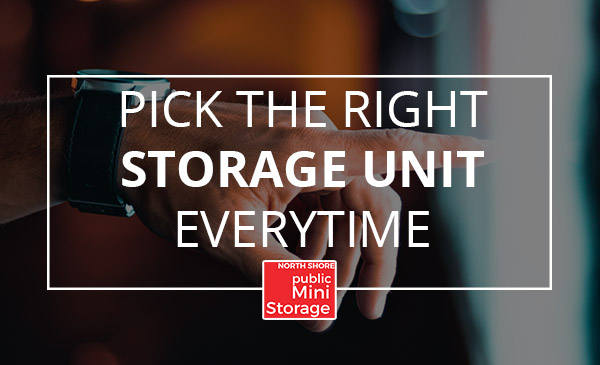- Have any questions?
- 604-929-1507
Maybe you live in an apartment or condo that really doesn’t have ample closet space or room to use for storage. You could live in a house where the basement floods a lot and you would rather not keep your valuables down there in the dampness where they can be ruined or damaged. You could be sending your oldest child off to college, and plan to change his room into that man-cave you always wanted and you got to move his stuff somewhere. You could even own or manage a business and your office doesn’t have any storage areas for your important archived documents. These are all great reasons to choose self storage.
Pick The Right Storage Unit Every Time
Deciding to use self storage is the first step, but where do you go from there? You need to look at what you plan to store in the unit and figure out which unit size and type you want to use. Here we provide a breakdown of the most common unit types, along with an idea of when you would choose each of them.
Not all facilities offer every unit type listed below, and this is not meant to cover every possible type that exists. However, these are the most common self storage unit types.
DRIVE-UP.
A drive-up self storage unit means just that, you can drive your vehicle right up to the door to access it. Normally these units have roll-up doors, similar to a garage door, with cement floors and metal walls. Often times the ceilings are high as well, allowing you to store bulky items like an armoire.
INTERIOR.
An interior self storage unit is one that you need to enter by the main door from the outside and have access from an inside hallway. These units can have roll-up doors like the drive-up units, and sometimes have a regular metal or wooden door like you would find in your home. These units can only be accessed from inside a hallway, there is no way to access them from outside. All of our self storage units at North Shore Mini Storage are interior units.
TEMPERATURE or CLIMATE CONTROL.
Self storage units that offer a set temperature, regardless of the weather outside, are called temperature control or climate control. Similar to your home, they are heated and/or cooled to a set temperature based on the season. Temperatures will range but units are generally kept at 12 C during the fall and winter months. This prevents sensitive items from freezing. During the warmer seasons, the temperature is set in the high 20s with the goal to limit the humidity as much as possible. These units are perfect for storing sensitive and valuable items such as photographs, antique furniture, electronics – anything that cannot be exposed to extreme temperature shifts.
PARKING.
Normally, parking spaces are outdoors, often in stone areas. Paved spaces are also common at newer facilities and ones located in cities and industrial areas. They are designed to park cars, trucks, RVs, boats, and trailers when not in use, and also provide plenty of room to gain access and maneuver larger vehicles such as boats and RVs. Sometimes there can be a metal roof structure to provide some protection from the sun, rain, and snow. There are even indoor parking spaces available at some facilities giving you the choice to essentially “garage” your vehicle rather than parking it outside.
Pick the right storage unit every time by referencing this great guide!


